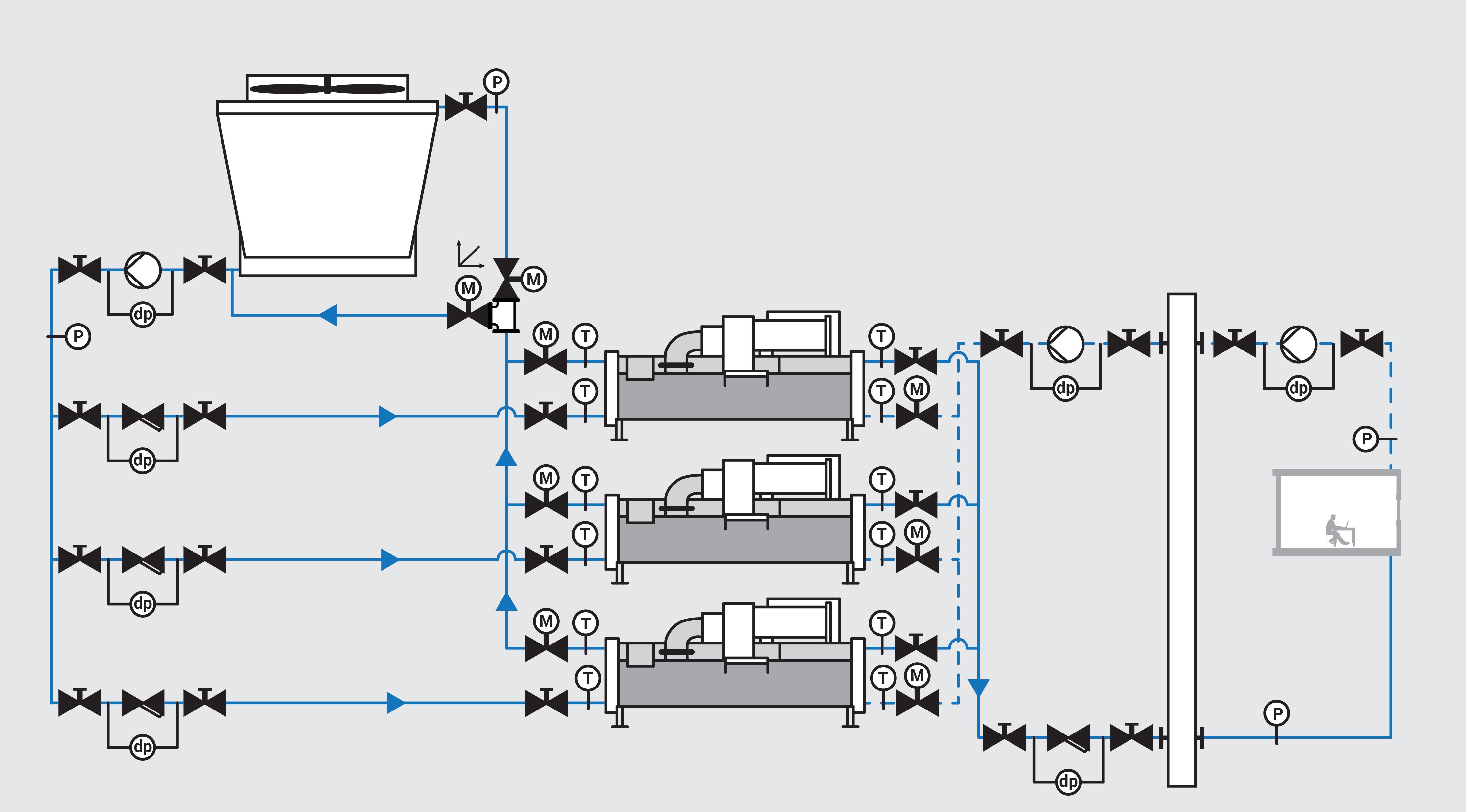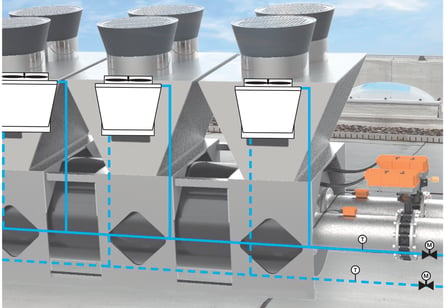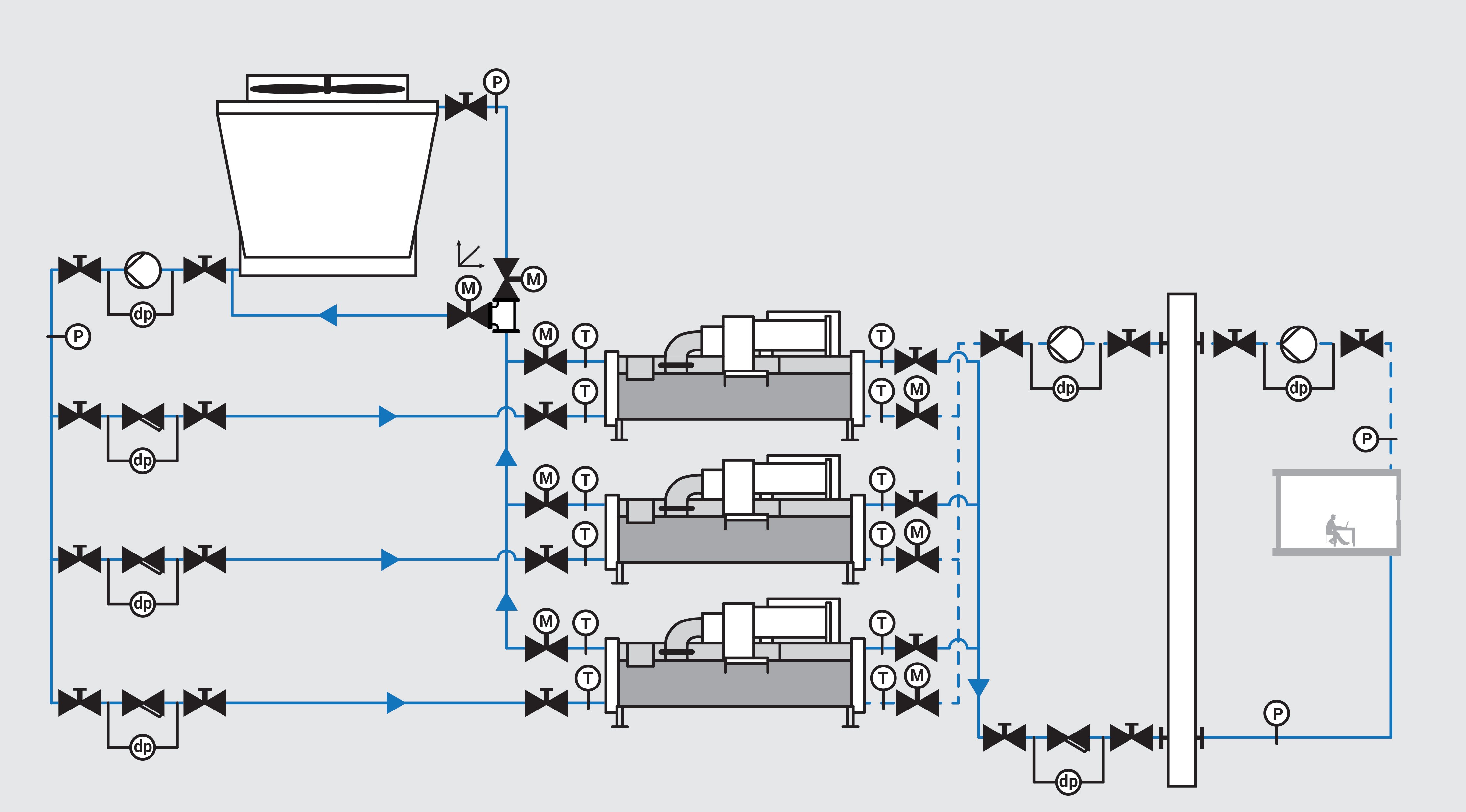Isolation of Chillers and Bypass in Closed Cooling Tower
Cooling towers are critical for electric power generation and even air-conditioning needs in industrial manufacturing. They are enclosed, steady-flow devices for cooling water by evaporation through direct air contact. Cooling towers use water to extract waste heat from a system and eject it into the atmosphere primarily through evaporation. The cooling tower along with the recirculating pump and heat exchanger make up a cooling system. The water will first pass through a heat exchanger, where it absorbs the heat. Water is distributed over the top of the cooling tower, and air passes over it, causing the water to evaporate. The heat is transferred from water to the air stream, raising its temperature and relative humidity to 100%. This warm air is discharged into the atmosphere, resulting in a cool water stream. The cooled water is pumped back through the heat exchanger; the cycle is repeated.
 Illustration example only; required components such as expansion vessels, safety valves, etc. are not shown.
Illustration example only; required components such as expansion vessels, safety valves, etc. are not shown.
Motorized open/close butterfly valves are responsible for the isolation of the various chillers. Depending on cooling requirements, one, two, or three chillers are in operation. Manual open/close butterfly valves isolate the pumps, chillers, cooling towers, and strainers during commissioning or maintenance. The 3-way control butterfly valve (diverting valve) performs temperature control on the cooling tower so that the downstream entry temperature on the chillers is not too low. The differential pressure sensors monitor the differential pressure of the pumps to ensure the pumps are functioning and to avoid irregular operating states (cavitation, air in the system, etc.). Differential pressure sensors monitor the strainers to detect contamination in the pipe system early.
system, etc.). Differential pressure sensors monitor the strainers to detect contamination in the pipe system early.
The static pressure sensors detect leakages in the system. In most cases, the volumetric flows of the generator (chiller) and consumer (usually partial load) will vary, meaning that a hydraulic separator or a buffer tank is used for the required load equalization. In addition to HVAC systems, thermal power plants, petroleum refineries, petrochemical plants, food processing plants, cooling towers are an inexpensive and reliable way of removing heat.

